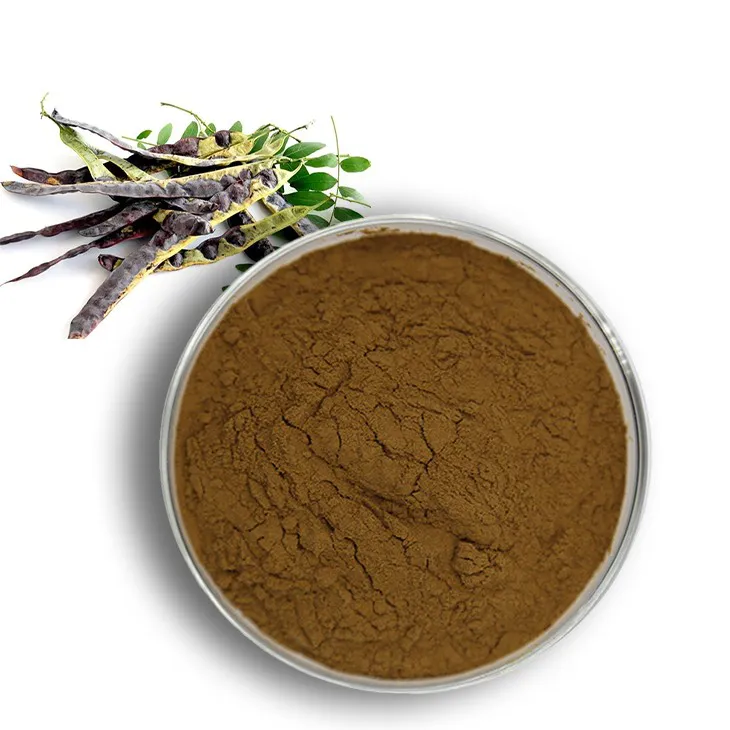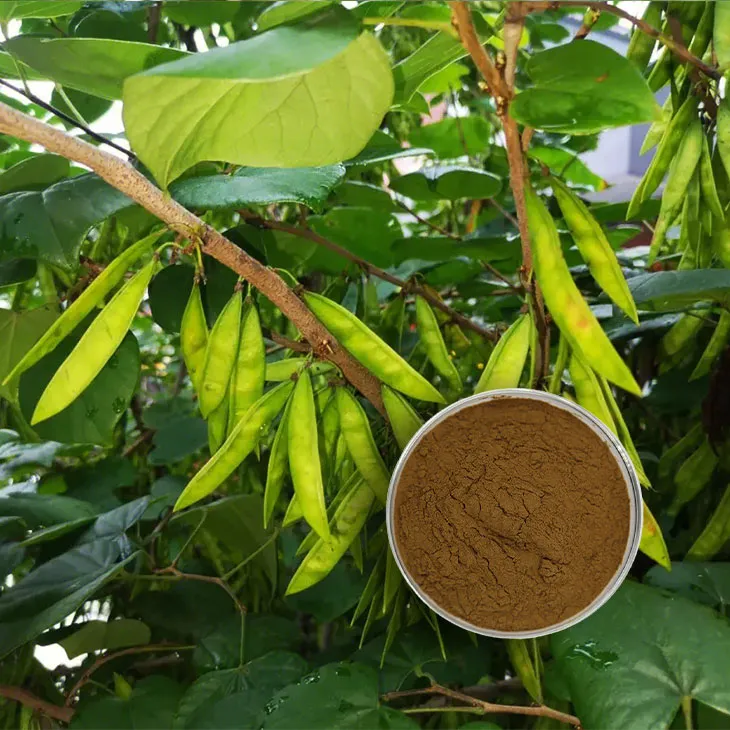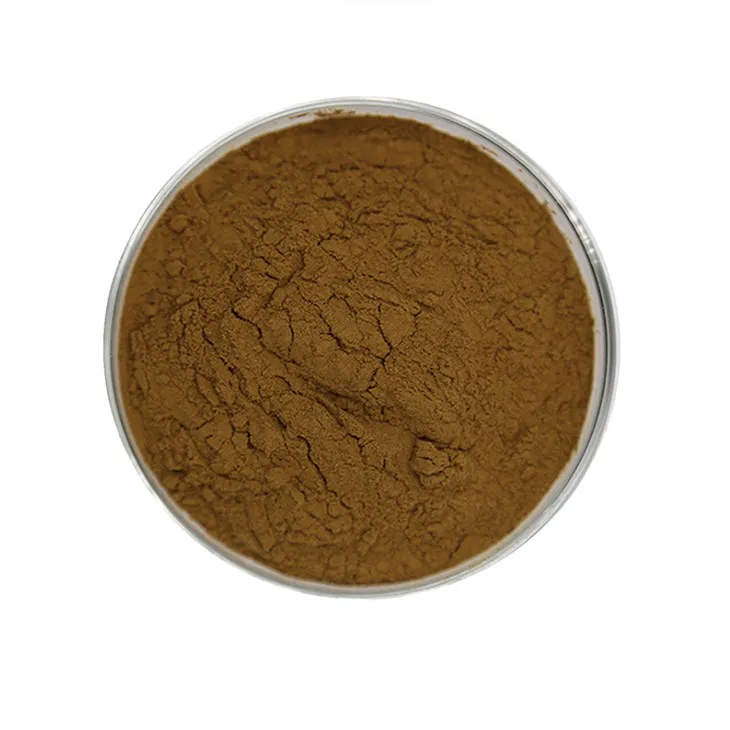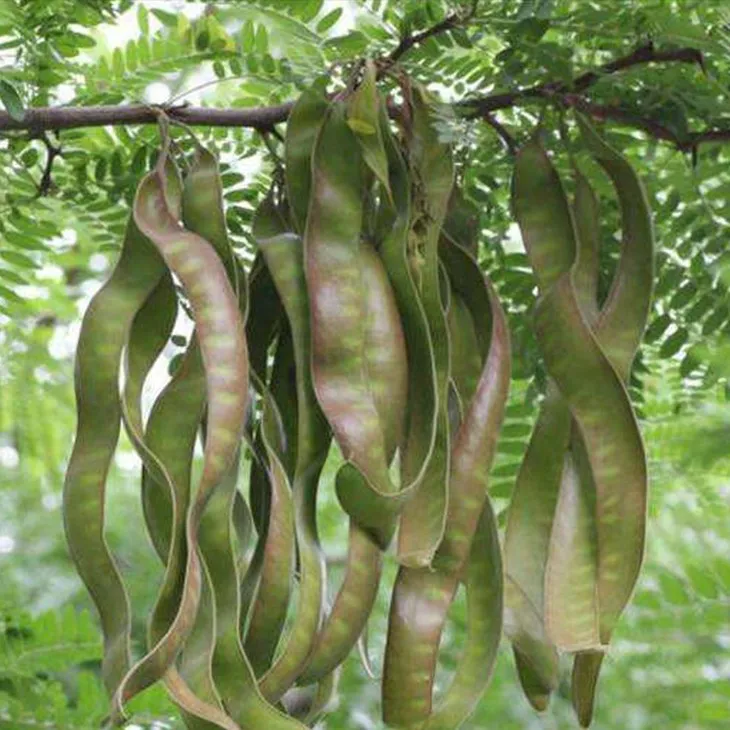- 0086-571-85302990
- sales@greenskybio.com
Saponin Extracts: China vs. the United States
2024-11-29

1. Introduction
Saponin Extract has gained significant attention in recent years due to its diverse biological activities and potential applications in various industries. China and the United States, as two major players in the global market, have their own characteristics in the Saponin Extract field. This article aims to conduct a comprehensive comparison between the two countries regarding the sources, extraction methods, applications, and regulatory differences of Saponin Extract, and also explore how cultural, technological, and economic factors shape their respective saponin extract industries.

2. Sources of Saponin Extract
2.1 China
In China, there are rich sources of saponin extract. Ginseng is one of the most well - known sources. Chinese ginseng has a long history of cultivation and usage in traditional Chinese medicine. The saponins in ginseng, known as ginsenosides, are believed to have various health - promoting effects, such as enhancing immunity, improving cognitive function, and relieving stress. Another important source is Astragalus membranaceus. Astragalus saponins have immunomodulatory properties and are widely used in traditional Chinese herbal formulas for treating diseases related to weakened immunity.
China also has a large number of wild plants that are rich in saponins. For example, Sophora flavescens contains matrine - type saponins, which have antibacterial, anti - inflammatory, and antiviral activities. These wild plants are not only important resources for saponin extraction but also an important part of China's biodiversity.
2.2 United States
In the United States, American ginseng is a significant source of saponin extract. American ginseng is mainly grown in some states such as Wisconsin and has a certain market share in the international market. The saponins in American ginseng also have similar health - promoting functions as those in Chinese ginseng. Additionally, some native plants in the United States, such as Yucca schidigera, are rich in saponins. Yucca saponins have been studied for their potential use in livestock feed additives, as they can improve the digestion and growth performance of livestock.

3. Extraction Methods
3.1 China
Traditional extraction methods in China are often based on the principles of traditional Chinese medicine preparation. Solvent extraction is commonly used. For example, in the extraction of ginsenosides from ginseng, ethanol is often used as a solvent. This method can effectively extract saponins from the raw materials. In addition, water extraction is also an option, especially for some water - soluble saponins. However, water extraction may require more complex purification steps.
With the development of modern technology, China has also begun to adopt some advanced extraction techniques. Supercritical fluid extraction has been gradually applied in the saponin extraction industry. This method has the advantages of high extraction efficiency, no solvent residue, and environmental protection. It can better preserve the active components of saponins.
3.2 United States
In the United States, modern extraction technologies are widely used. Column chromatography is one of the common methods for saponin extraction. It can separate and purify saponins with high purity through different chromatographic columns. Microwave - assisted extraction is also popular. This method can significantly shorten the extraction time by using microwave energy to accelerate the mass transfer process of saponins from the raw materials to the solvent.
Moreover, the United States also pays attention to the standardization of extraction processes. They often use strict quality control systems to ensure the consistency and stability of saponin extracts. For example, in the production of saponin extracts for the pharmaceutical industry, strict GMP (Good Manufacturing Practice) regulations are followed.

4. Applications
4.1 China
In China, saponin extracts have a wide range of applications in the field of traditional Chinese medicine. They are important components of many traditional Chinese medicine prescriptions for treating various diseases, such as cardiovascular diseases, respiratory diseases, and endocrine disorders. For example, some saponin - containing herbs are used to regulate blood pressure and blood lipid levels.
In addition to the medical field, saponin extracts are also used in the cosmetic industry in China. Saponins have emulsifying and surfactant properties, which can be used in skin - care products such as creams and lotions. They can improve the texture and stability of the products and also have certain skin - nourishing effects.
4.2 United States
In the United States, saponin extracts are mainly applied in the dietary supplement and functional food industries. Many saponin - based dietary supplements are sold in the market, claiming to have various health benefits such as improving energy levels, enhancing antioxidant capacity, and promoting weight loss. For example, some products containing ginseng saponins are popular among consumers who are looking for natural energy boosters.
The saponin extracts are also being explored for potential applications in the pharmaceutical industry in the United States. Although currently, there are not as many saponin - based drugs on the market as in China's traditional Chinese medicine, research is ongoing to develop new drugs based on saponins for the treatment of diseases such as cancer and neurodegenerative diseases.

5. Regulatory Differences
5.1 China
In China, the regulation of saponin extracts is mainly based on the regulations of traditional Chinese medicine and food additives. For saponin extracts used in traditional Chinese medicine, they are regulated by the China Food and Drug Administration (CFDA). Traditional Chinese medicine prescriptions containing saponin extracts need to comply with relevant quality standards and safety regulations. For saponin extracts used as food additives, they need to meet the requirements of food safety standards, including limits on heavy metals, pesticide residues, and microbial contamination.
China also encourages the research and development of saponin extracts through relevant policies. For example, some preferential policies are provided for the research and development of new traditional Chinese medicine products containing saponin extracts.
5.2 United States
In the United States, the regulation of saponin extracts depends on their applications. If saponin extracts are used in dietary supplements, they are regulated by the Dietary Supplement Health and Education Act (DSHEA). Under this act, dietary supplement manufacturers are responsible for ensuring the safety and labeling accuracy of their products. However, the regulatory requirements are relatively less strict compared to drugs. If saponin extracts are intended for use in drugs, they need to go through a more rigorous approval process by the Food and Drug Administration (FDA), including pre - clinical and clinical trials to prove their safety and efficacy.
6. Cultural, Technological, and Economic Factors
6.1 Cultural Factors
In China, the long - standing tradition of traditional Chinese medicine has a profound impact on the saponin extract industry. Traditional Chinese medicine concepts such as "holistic view" and "syndrome differentiation" influence the research, production, and application of saponin extracts. People in China are more likely to accept saponin extracts in the form of traditional Chinese medicine prescriptions. In the United States, the culture of "evidence - based medicine" prevails. Consumers are more likely to demand scientific evidence to prove the effectiveness of saponin extracts, especially when they are used as dietary supplements or potential drugs.
6.2 Technological Factors
The United States has a strong technological advantage in the field of saponin extract. Advanced extraction technologies and analytical methods are widely used in the United States. For example, high - performance liquid chromatography (HPLC) is commonly used for the analysis and quality control of saponin extracts. In China, although the technological level is also constantly improving, there is still a certain gap compared to the United States in some aspects. However, China has unique advantages in the research and development of traditional extraction methods based on traditional Chinese medicine theory.
6.2 Economic Factors
In the United States, the high - cost of research and development and production often leads to relatively high - priced saponin - based products, especially those in the pharmaceutical and high - end dietary supplement industries. In China, due to relatively lower labor costs and abundant raw material resources, the production cost of saponin extracts can be relatively lower, which makes saponin - based traditional Chinese medicine products more accessible to the general public.
7. Conclusion
In conclusion, there are both similarities and differences between China and the United States in the saponin extract industry. The two countries have different sources, extraction methods, applications, and regulatory systems for saponin extracts, which are influenced by cultural, technological, and economic factors. Understanding these differences can help promote exchanges and cooperation between the two countries in the saponin extract field, and also provide references for the further development of the global saponin extract industry.
FAQ:
What are the main sources of saponin extract in China?
In China, common sources of saponin extract include many traditional Chinese medicinal plants. For example, ginseng is a well - known source. Ginseng roots are rich in saponins. Another source is Panax notoginseng. The roots of this plant also contain a significant amount of saponins. Additionally, some leguminous plants are also sources of saponin extract in China.
What are the typical extraction methods for saponin extract in the United States?
In the United States, common extraction methods for saponin extract may involve solvent extraction. They often use organic solvents such as ethanol. First, the plant material is ground into a fine powder. Then, it is soaked in the solvent for a period of time to allow the saponins to dissolve into the solvent. After that, through filtration and evaporation processes, the saponin extract can be obtained. Another method may involve supercritical fluid extraction in some advanced research or industrial applications, which uses supercritical carbon dioxide as the extraction medium.
What are the major applications of saponin extract in China?
In China, saponin extract has a wide range of applications. In the field of traditional Chinese medicine, it is used for its potential health - promoting properties. For example, it may be used to enhance immunity, improve cardiovascular function, and relieve fatigue. In the cosmetic industry, saponin extract is added to some skin care products due to its antioxidant and skin - nourishing properties. It can also be used in the agricultural field as a natural pesticide or plant growth regulator in some cases.
How are saponin extract products regulated in the United States?
In the United States, the regulation of saponin extract products depends on their intended use. If they are used as dietary supplements, they are regulated by the Food and Drug Administration (FDA) under the Dietary Supplement Health and Education Act (DSHEA). Manufacturers are required to ensure the safety of the products and make proper label claims. If saponin extract is used in pharmaceutical applications, it has to go through more rigorous drug approval processes, including pre - clinical and clinical trials to prove its safety and efficacy.
How do cultural factors influence the saponin extract industry in China?
In China, traditional Chinese medicine culture has a profound impact on the saponin extract industry. The long - standing belief in the medicinal properties of plants containing saponins has led to extensive research and utilization. Chinese people have a traditional acceptance of using natural plant extracts for health care, which promotes the development of the saponin extract industry from the consumer side. Moreover, traditional Chinese medicine theories about the balance of the body and the holistic approach also influence the research and application directions of saponin extract in China.
Related literature
- Saponin Extracts: Properties and Applications in the Chinese Herbal Medicine"
- "The US Saponin Extract Industry: Technological Advances and Regulatory Frameworks"
- "Comparative Analysis of Saponin - rich Plants in China and the United States"
- ▶ Hesperidin
- ▶ Citrus Bioflavonoids
- ▶ Plant Extract
- ▶ lycopene
- ▶ Diosmin
- ▶ Grape seed extract
- ▶ Sea buckthorn Juice Powder
- ▶ Fruit Juice Powder
- ▶ Hops Extract
- ▶ Artichoke Extract
- ▶ Mushroom extract
- ▶ Astaxanthin
- ▶ Green Tea Extract
- ▶ Curcumin
- ▶ Horse Chestnut Extract
- ▶ Other Product
- ▶ Boswellia Serrata Extract
- ▶ Resveratrol
- ▶ Marigold Extract
- ▶ Grape Leaf Extract
- ▶ New Product
- ▶ Aminolevulinic acid
- ▶ Cranberry Extract
- ▶ Red Yeast Rice
- ▶ Red Wine Extract
-
Honeysuckle Pollen
2024-11-29
-
Fig Extract
2024-11-29
-
Acerola Juice Powder
2024-11-29
-
Tinospora cordifolia extract
2024-11-29
-
Curcuma Longa Extract/Turmeric extract
2024-11-29
-
Phellodendron Extract
2024-11-29
-
Sea buckthorn oil
2024-11-29
-
Konjac Powder
2024-11-29
-
White Willow Bark Extract
2024-11-29
-
Carrageenan Extract Powder
2024-11-29





















